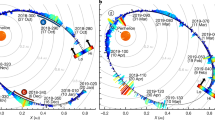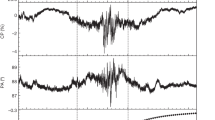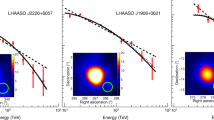Abstract
Part 2: Origin of the Slow Mesons
IN Part 1 of the present article*, we showed that two types of mesons exist, and it was suggested that the heavier, π-mesons, decay to produce the lighter, μ-mesons. In this second part, we discuss the origin of the slow mesons observed in photographic emulsions, and their relation to the mesons forming the penetrating component of the cosmic rays, of which evidence is provided by experiments with Wilson chambers and counters. We also give photomicrographs which show that some slow mesons, ejected from nuclei during ‘explosive disintegrations’, can enter nuclei and produce a second disintegration. Most of the observations on plates exposed at 5,500 m. were made with boron-loaded emulsions and, for the most part, we have confined our analysis to the results obtained with plates of this type. The loading material has an important influence on the rate of fading of the latent image, but by the above procedure we can compare the results of experiments at different altitudes.
This is a preview of subscription content, access via your institution
Access options
Subscribe to this journal
Receive 51 print issues and online access
$199.00 per year
only $3.90 per issue
Buy this article
- Purchase on Springer Link
- Instant access to full article PDF
Prices may be subject to local taxes which are calculated during checkout
Similar content being viewed by others
Author information
Authors and Affiliations
Rights and permissions
About this article
Cite this article
LATTES, C., OCCHIALINI , G. & POWELL , C. Observations on the Tracks of Slow Mesons in Photographic Emulsions. Nature 160, 486–492 (1947). https://doi.org/10.1038/160486a0
Issue Date:
DOI: https://doi.org/10.1038/160486a0
This article is cited by
-
On the Disintegration of the Positive Heavy Meson
Brazilian Journal of Physics (2021)
-
Carried by History: Cesar Lattes, Nuclear Emulsions, and the Discovery of the Pi-meson
Physics in Perspective (2014)
-
A Physicist for All Seasons: Part II
Physics in Perspective (2013)
Comments
By submitting a comment you agree to abide by our Terms and Community Guidelines. If you find something abusive or that does not comply with our terms or guidelines please flag it as inappropriate.



